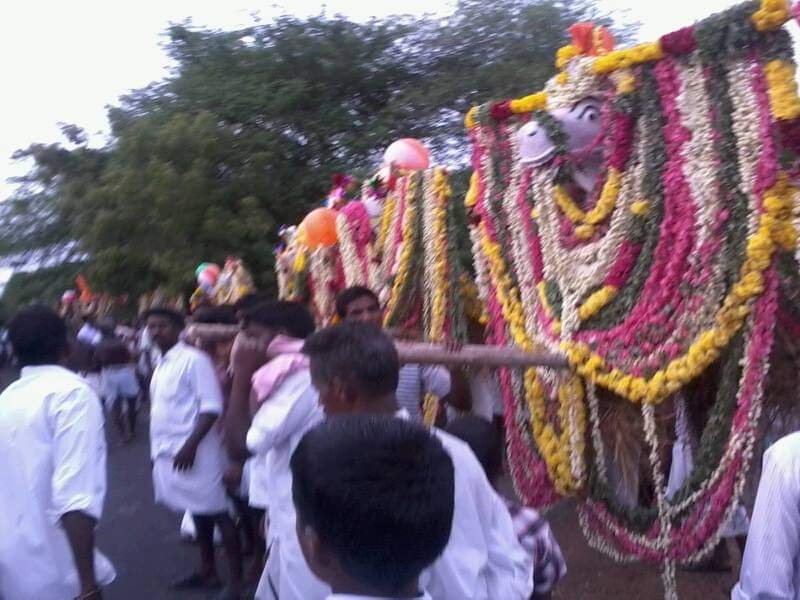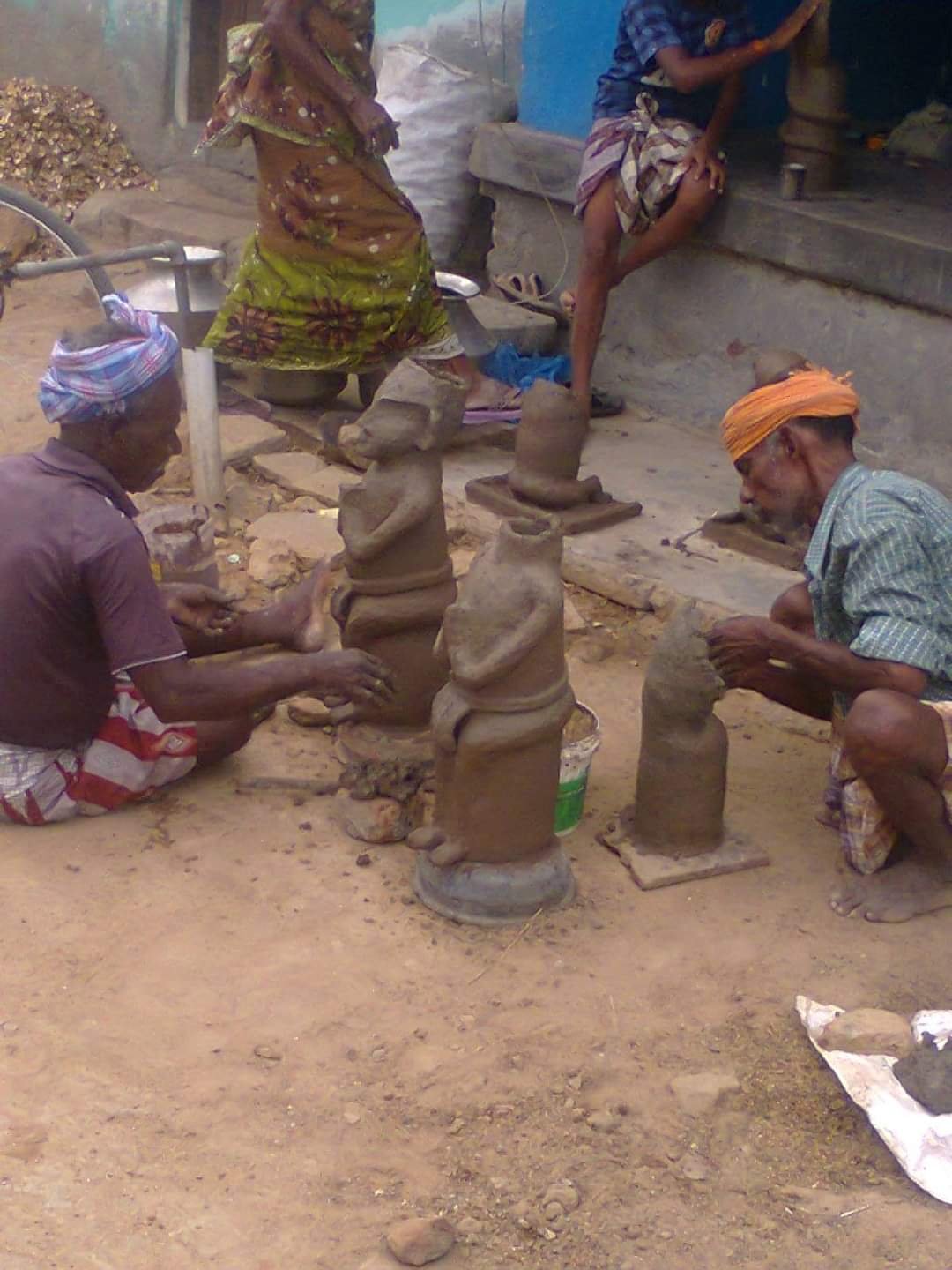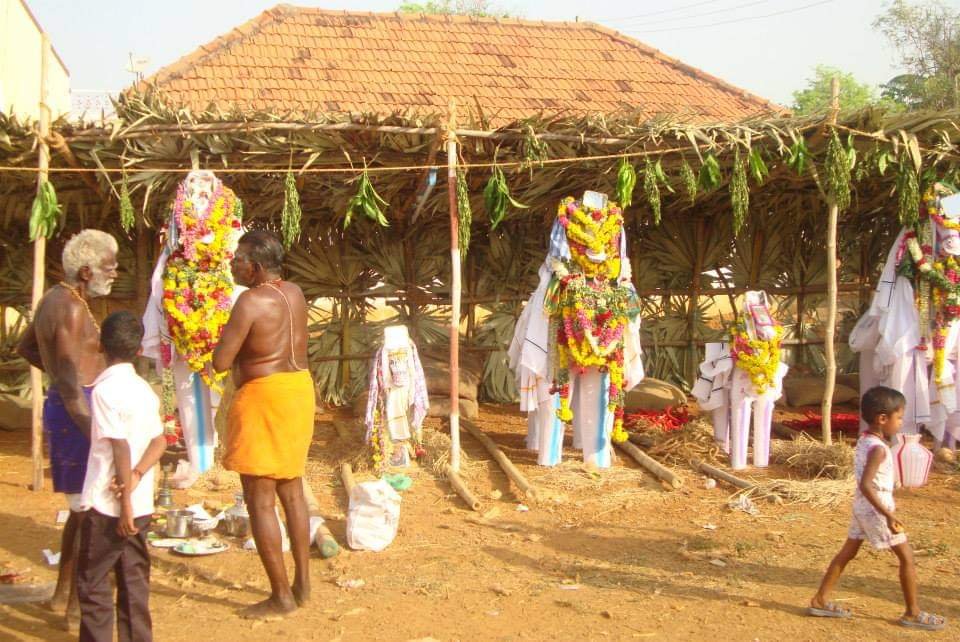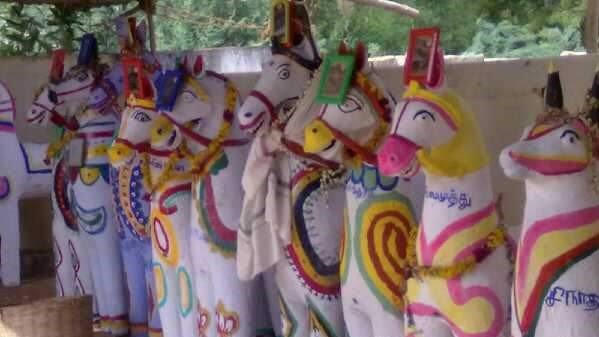Read in : தமிழ்
Mud horses continue to be a mode of worship at village festivals.
Tamil country is full of folk arts. Many of these art forms have declined because of the poverty that artists face, lack of patronage, and urbanization. Some are on the verge of disappearance. Some have disappeared without any trace. A few are surviving in the form of traditional rituals. A few others are swimming against the current to stay afloat.
One art form, however, is sustaining on what farm labourers can spare from their income. The Tamil name for the art form means “making mud horses using alms given from wage work.”
Perugavazhndaan village on the Tiruvarur – Mannargudi route is home to this tradition. The name Perugavazhndan refers to someone who lived a grand life. A Chola-era stone inscription calls the village “Chaturvedimangalam that gave a grand life.” Kovilur is the village next door.
Kallars, kuyavars (potter caste) and adi dravidars are the caste groups that live here. Kallars carry the last name Senathipathiyar.

Perugavazhndaan has an Ayyanar temple. In it, there is a tall mud horse and 12 smaller, five-feet mud horses. They give the appearance of a military parade of a king of the olden times. Every year, new mud horses join the parade.
Potters of the village make these statues. They feel it’s their right to make them. The tall mud horse is nearly 15 feet high. The right to make that horse belongs to the family of hereditary priests of the temple. Near their house is an old style kiln in which the large mud horse is made and fired.
The right to make the smaller mud horses are given to various other artiste families who make pots. Each family has its own kiln.
Every year, during the harvest festival, the agricultural labourers of the village are paid for their work in foodgrains. The farm workers cup their hands together and, from the grain wage they received, they scoop the paddy that fills and deposit it separately to make a mound. This ritual happens every day farm work happens and is paid for. The grain collected is called “alms from wage work”, and is given to the potters to make the mud horses. A portion of the grains is given to the paraiyar caste group who play the “parai” drum.

The carrying of mud horses happens in February. On an auspicious day, the potters take clay from near the pond and start making the mud horses. It takes nearly a month to finish making the figures. The horse figures are then fired in the kiln, after which they are painted with multi colours. Villagers say that in the past five natural colours were used on the mud horses.

The drummer is worshipped and sandal paste is spread on him. He is garlanded with flowers. The drummer, now a divine entity, guides the villagers on the “eye opening” ritual for the horses.
The mud horses festival is eventful. Long bamboo frames are made on which the mud horses are positioned. This is done with much care. Then villagers gather and together carry the horses on their shoulders in a procession on the streets. The procession stops in front of only three houses. If the procession stops anywhere else, it is a sign of misfortune for the family living in that house.
The horses are then carried to the Ayyanar temple campus where they are positioned carefully. It is believed that the divine rises in the body of the man who plays the parai drum. The drummer is worshipped and sandal paste is spread on him. He is garlanded with flowers. The drummer, now a divine entity, guides the villagers on the “eye opening” ritual for the horses.
In a village where many caste groups live, it’s a welcome sign that a paraiyar man is considered divine and, based on his directions, a temple festival is conducted. The mud horse festival creates social harmony in the village.
Prayers are made to Ayyanar. He is asked to remove any lack in the village, or cure any disease that has befallen villagers. Terracotta offerings of human body parts, and figures of cows, goats and hens are made to the Ayyanar deity as part of the prayer.

The festival has been around for many hundreds of years. There is a historical basis for it. Pallava king Nandivarman II was crowned in the year 750 CE. Pandya king Harikesari Parangusavarman got together with minor kings and took Nandivarman II prisoner. Pallava king Udayachandran came with a large cavalry and waged war to rescue Nandivarman II.
A copper inscription says that the battle happened near Perugavazhndaan. Since then, mud horse parades have been happening in the village, folklore experts say.
Our best wishes for a festival that promotes social harmony among communities!
Read in : தமிழ்
